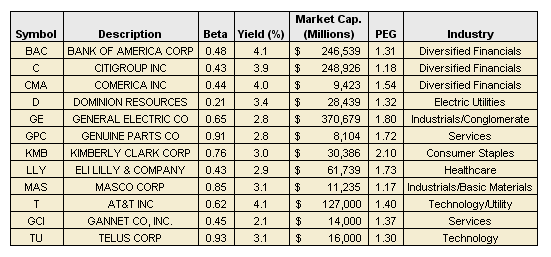Hedge Your Bets With InflationLinked Bonds Bonds Market Dhara Web Site
Post on: 19 Май, 2015 No Comment

Home Bonds Hedge Your Bets With Inflation-Linked Bonds
1/9/2012 1:13:50 AM
Administrator
Posts: 562
Inflation can have a dampening effect on investment returns and can cut deeply into investment return value if there is no offset for the inflationary risk. If you have a portfolio, for example, that returns 9%, but the inflation rate is 3%, the true value of your returns has been cut by about 33%. Inflation-linked bonds. however, can help to offset — or hedge — that risk because they increase in value during inflationary periods.
Although inflation has not been a major macroeconomic factor in the recent past, it might be a factor going forward, and inflation-linked bonds (also known as inflation-indexed bonds) are more popular than ever as a hedge against an uncertain future. The United States, Canada, Japan and a wide range of European countries all issue inflation-linked bonds. And ILBs — as they are often called — have become a popular long-range planning investment vehicle for individuals and institutions alike. (For background reading, see What You Should Know About Inflation and the All About Inflation Tutorial .)
History of Inflation-Linked Bonds
Inflation-linked bonds were first developed in the 18th century to combat inflation’s corrosive effects on the real value of consumer goods such as beef, eggs, clothing, shoes and other essential items during times of rising prices. The Massachusetts Bay Company sold the bonds beginning in the 1780s, but at that time in history few investors were interested. However, following the rapid economic expansion after World War II, the concept of inflation-linked bonds caught the attention of governmental financial planners ; the nation of Iceland issued ILBs in the early 1950s to combat high inflation due to their rapid growth in GDP .
Thirty years later, in the early 1980s, the modern inflation-linked bond market began in earnest when Great Britain began to issue ILBs, or linkers, as they are often called in the United Kingdom. Other countries followed suit including Sweden, Canada and Australia, and the United States did not fully re-enter the ILB market until Treasury inflation-protected securities (TIPS) were issued in the late 1990s. The most recent U.S. issue of ILBs are inflation-indexed savings bonds. commonly referred to as I-Bonds. (For more on inflation-protected securities, see Treasury Inflation Protected Securities and What are I-Bonds and how can I buy them? )
How Inflation-Linked Bonds Work
Inflation-linked bonds operate in a manner much like when they were first issued by the Massachusetts Bay Company more than 200 years ago. The primary difference, however, is that they are now issued by governments rather than companies. ILBs are still tied to the cost of consumer goods, such as the consumer price index (CPI); each country has its own method for calculating those values on a regular basis.
In addition, each nation has its own agency responsible for issuing inflation-linked bonds. In the United States, TIPS and I-Bonds are tied to the value of the United States’ CPI and sold by the Treasury. while inflation-linked gilts are issued by the U.K. Debt Management Office and link to that country’s retail price index (RPI). The Bank of Canada issues that nation’s real return bonds, which are tied to the Canada All-Items CPI inflation index, while Japan’s Ministry of Finance’s inflation-linked bonds are tied to the Japanese CPI. (As a measure of inflation, this index can help you make key financial decisions. See The Consumer Price Index: A Friend To Investors .)
In general, for ILBs issued in every country, the outstanding principal of the bond rises with inflation. So, when inflation rises, so does the face. or par. value of the bond. This is in contrast to the inflationary trend with general securities discussed earlier, which decrease in value when inflation rises. In addition, once the par value adjusts in relation to the cost of the price of goods, the interest paid out by the bonds is also adjusted for inflation. By providing these features, ILBs are able to blunt the real impact of inflation felt by the holder of the bonds.

The Role of Risk in Inflation-Linked Bonds
While inflation-linked bonds have considerable upside potential, they also possess certain risks. Their value tends to fluctuate not just with the adjustments in the CPI to which they are tied, but also with the rise and fall of interest rates. During deflationary periods — where interest rates are very low — the rate of return for ILBs tends to be less than other bond categories. (Get a better understanding of the overall market in Leading Economic Indicators Predict Market Trends .)
In addition, TIPS, I-Bonds and many of their global inflation-linked counterparts do not have much value protection during times of deflation. The U.S. Treasury, however, does have a protection floor for TIPS: $1,000 in par value — the lowest value that the U.S. government will allow it to be redeemed for. Since the higher-priced bonds, or seasoned TIPS issues, have a greater value, the risk is still considerable because they carry years of inflation-adjusted accruals.
TIPS and I-Bonds also present complications in trading and taxation that don’t affect other fixed income asset classes. This is largely due to the fact that ILBs have two values: the original face value of the bond, and the current value adjusted for inflation. (Avoid the errors made daily in bond portfolios everywhere. See Common Mistakes By Fixed-Income Investors .)
Conclusion
Despite their complex nature and potential downside in deflationary eras, ILBs are still enormously popular because they are the most trusted investment vehicle to hedge against potential inflation. The corrosive effect that inflation can have on returns is a strong motivating factor behind the popularity of these bonds.
An additional upside of ILBs is because they are such a unique investment vehicle, their returns tend to not correlate with stocks, and to a lesser degree other fixed income asset classes, making them a diversification choice for a balanced portfolio. TIPS and I-Bonds are also an increasingly popular choice for long-range investing for individuals saving for their children’s college or retirement. Since inflation over a lengthy time period is much more assured, inflation-linked bonds fit neatly into those far-reaching investment goals














